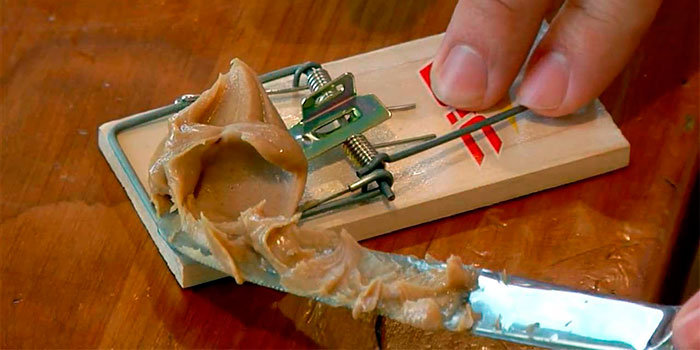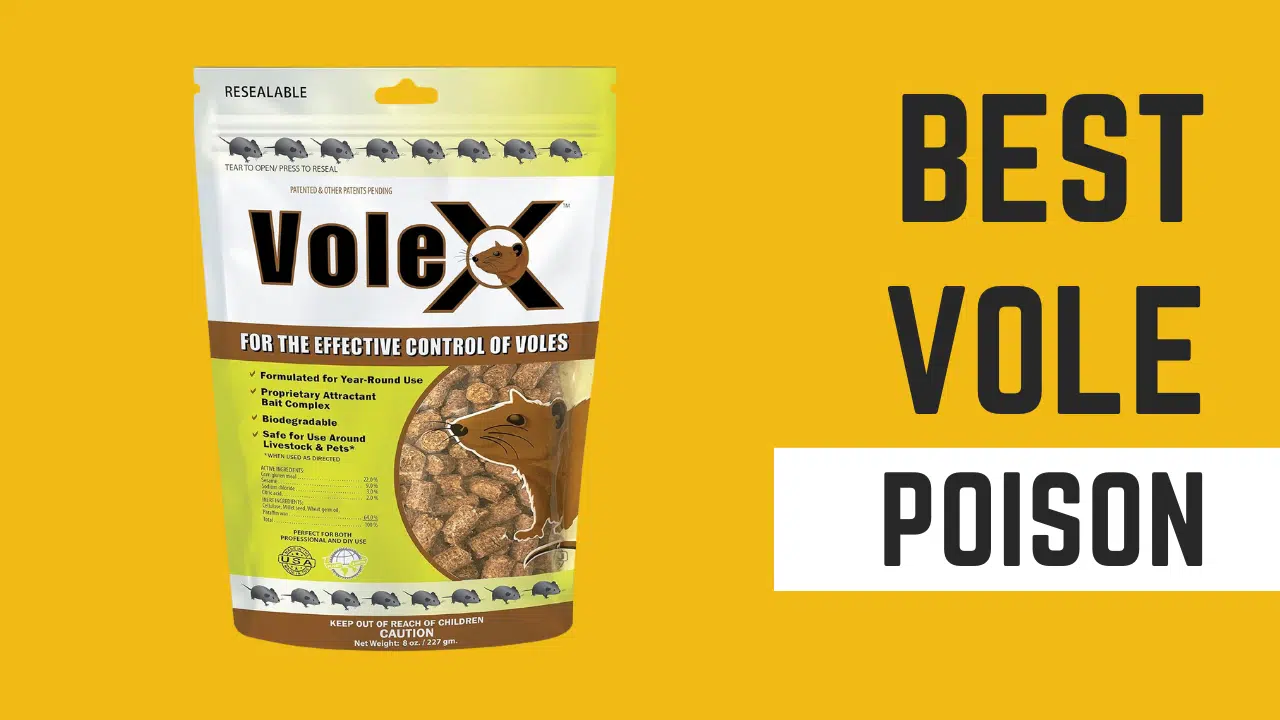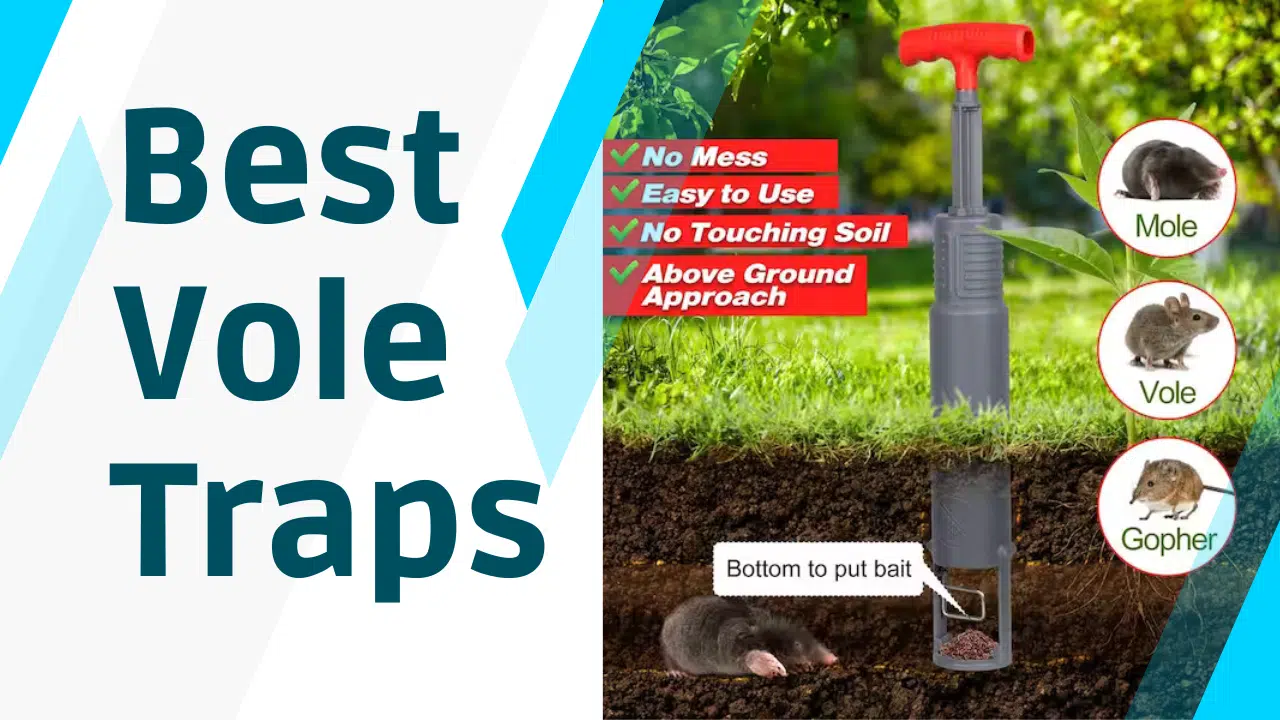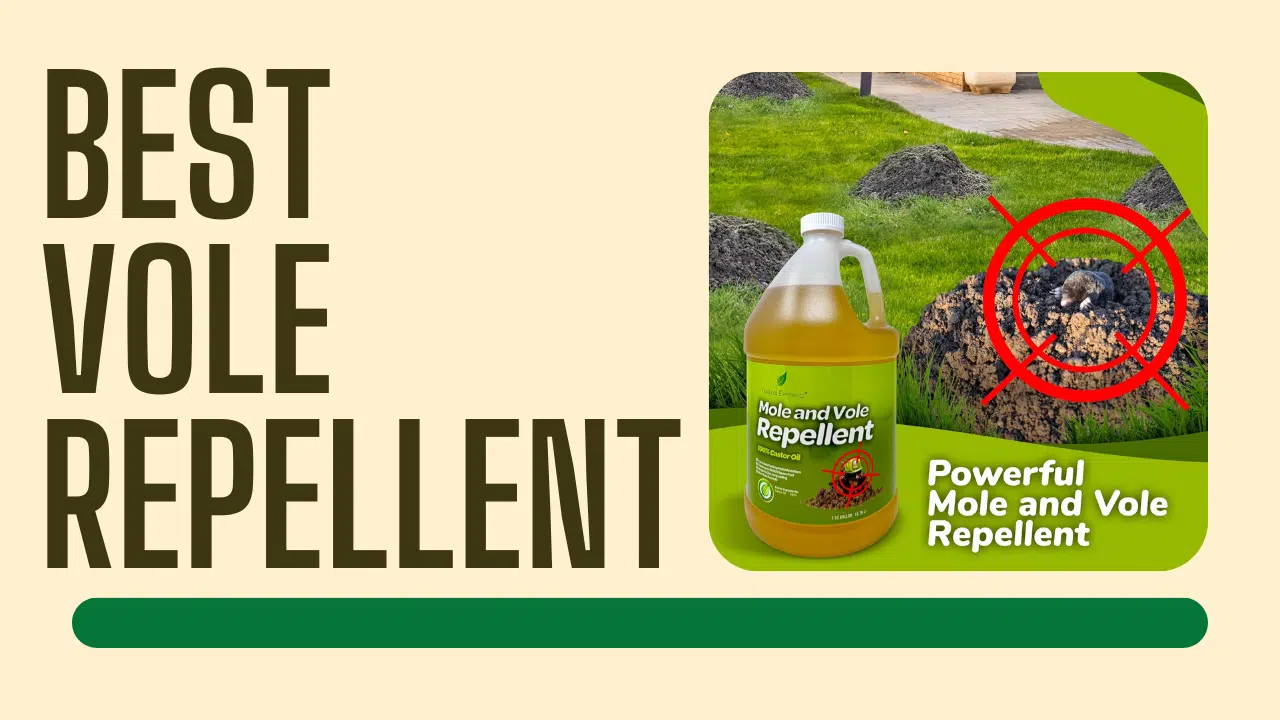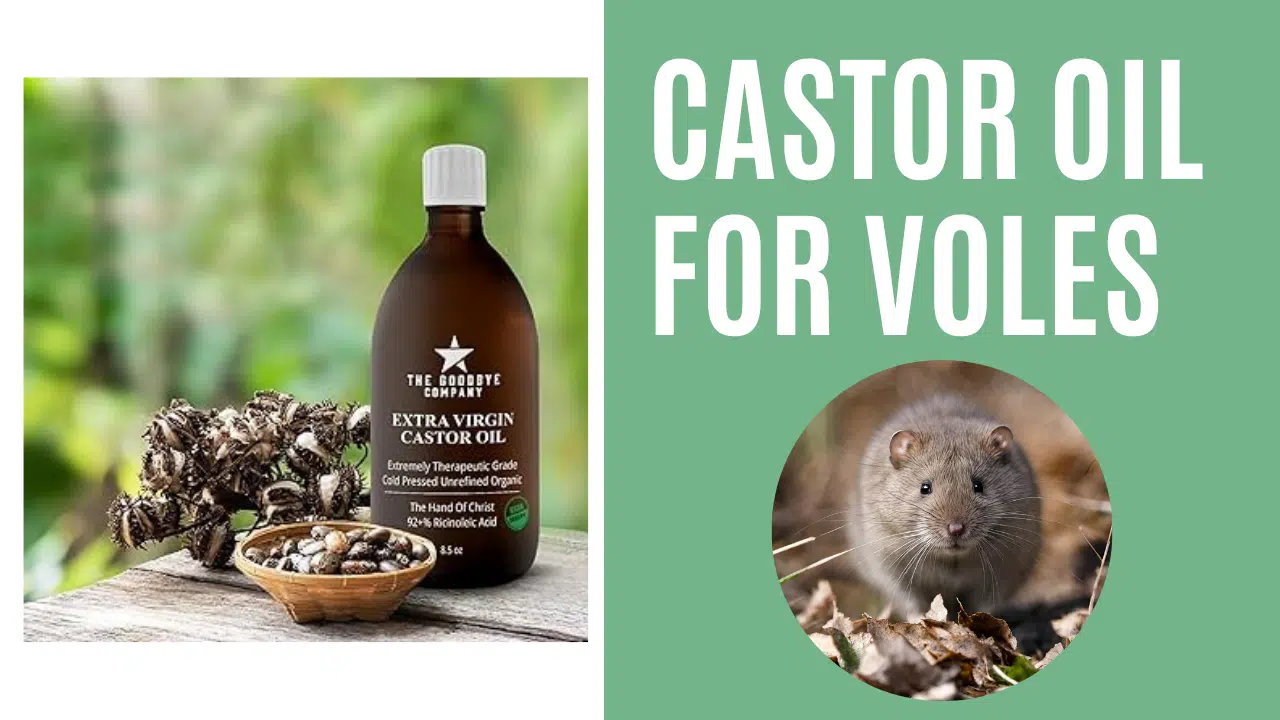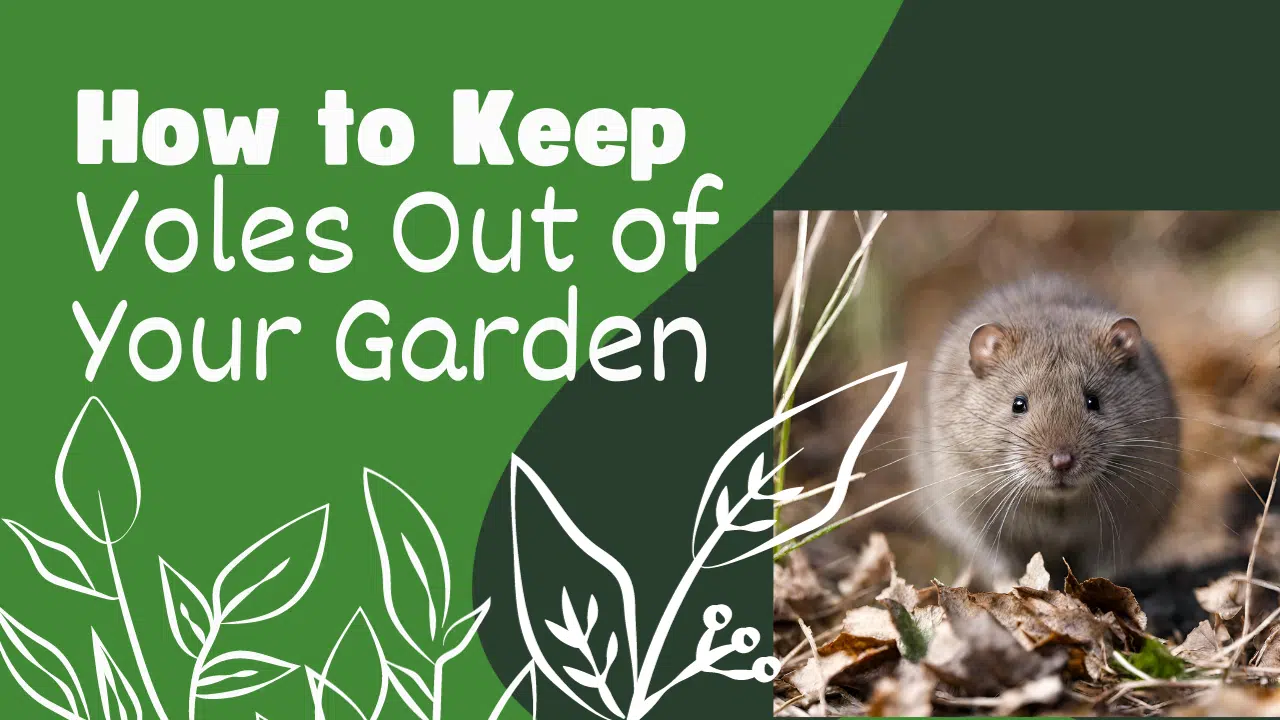
- LAST UPDATED: December 9, 2023
Mice are a necessary link in the food chain in the great outdoors, but indoors, they are thieves, polluters, and disease spreaders that simply cannot be tolerated. If you are suffering an infestation, perhaps one question you are asking is “Do mice like peanut butter?”
The answer is: “No, mice don’t like peanut butter, they love it!” And since us humans often share that PB love affair, you likely already have some around the house and won’t need to invest any money in buying mouse bait.
Peanut butter is a kind of obsession with mice, and all rodents in general. Using it to catch mice almost feels like “cheating;” but seeing as the mice don’t play fair, why should you?
Contents
Does Peanut Butter Attract Mice?
Tom and Jerry, Mickey Mouse, and the rest of the mice of TV Land have trained us to think of a chunk of solid cheese as the best mouse bait, but like so many other things we absorb from our TV sets, this just isn’t the case.
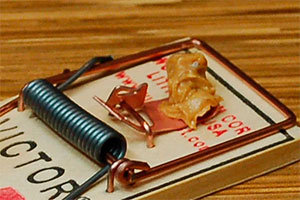
Why is PB so attractive to mice? First, because it derives from peanuts, which mice love. Second, because of its high-calorie content, which rodents need (especially during the cold season) to keep their ever-overactive metabolism in full swing. Third, because the smell and taste are so strong and delicious to mousy noses and taste buds!
Catching Mice With Peanut Butter
Before we extol the virtues of peanut butter for catching mice, you might want to first click on this link to find out what mice like to eat, other than peanut butter, that is.
But if you were to make a long, long list of all the things mice like to eat most, there is not a shadow of a doubt that peanut butter would be at the very top of that list. And it doesn’t really matter what kind of PB spread you use. Whether creamy or chunky, all-natural or “partially artificial, ” or any particular brand you want to name, mice aren’t particular: so long as it’s peanut butter, they absolutely love it.
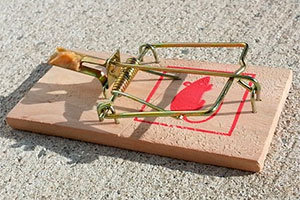
Here are some reasons:
- Sticky baits are best because the mouse can’t take it and run. They have to stay and nibble, increasing the chances of catching them.
- It’s cheap, readily available, and easy to apply.
- It’s easy to mix PB with poison. Only do this if it’s not a danger to small children and pets, however.
- It works well with any and all types of mouse traps.
- PB can also block a mouse’s airways and make it choke, giving you a chance at snatching victory from seeming defeat.
Attracting and catching mice with PB bait is a little like fishing for catfish with stink bait (too easy) or attracting deer within the range of your hunting rifle with a salt block (not fair), which makes peanut butter exactly the kind of mouse bait you’ve been looking for.
How to Set on a Mouse Trap?
But there’s more to knowing how to catch a mouse than just knowing which type of bait to use.
Here is some step by step advice on how to make your PB traps work as effectively as possible:
- Put on a pair of rubber or plastic gloves before handling the trap or the peanut butter. Mice can detect your scent, and they find it scary, so don’t let your human smell counteract the PB smell.
- If using a snap trap, place the PB on the trigger alone. If using a glue trap, put the PB in the center. If using a live catch trap, place the PB as far inside the trap as possible.
- Don’t use too much bait. You want just a pea-sized amount of peanut butter, enough to attract but not enough to nibble off the edges without getting caught.
- Prepare a lot of traps, not just a few. The more traps, the greater your odds of success. Don’t skimp.
- Place traps near walls (mice have an aversion to open spaces) and in dark crevices or anywhere you have spotted them on the move. Don’t be afraid to place two or three traps in close proximity either.
- Make sure bait and triggers face the wall or mice might just walk around the trap.
- After a trap catches a mouse, (wearing gloves again to avoid contracting disease) dispose of rodent and reset immediately. Move traps around if they don’t get a catch after a week.
What If Peanut Butter on Mouse Traps Is Not Working?
Let’s say your PB-based mouse extermination program doesn’t seem to be working? Now what?
Whatever the problem, you can be sure it’s not with the peanut butter. Perhaps, you need to switch mouse trap models or place your traps differently.
Take Advantage of Nest-building Time Another way to enhance your mouse traps is to lay down cotton wool, cotton balls, wood shavings, or shredded paper (if you have a paper shredder) on or near the traps. Mice are in nest-building mode in the cold season and will be attracted by all suitable materials. You can even tie down snap traps with floss, string, or yarn, and mice will often chew threw it and trap themselves.
Or, you may just need to be patient. While it’s true that a lot of mice are often caught on the first day (which is why you should “go big” immediately when setting traps, to maximize the advantage of surprise), sometimes, it takes a few days. Mice can be leery of new objects in their environment.
You may need to leave unset traps out, bait and all, to lure them in first. Then, after they are accustomed to feeding on your free peanut butter, set the traps and get results.
Also realize that:
- if you only have one or two adult mice who go out on foraging duty, your odds of making an immediate catch are lower.
- if you have a bunch of mice, you are more likely to catch several mice right away.
But certainly, don’t give up. Experiment with different traps and approaches. If all else fails, call in an exterminator. And also make sure you seal off mouse entry points to prevent the revolving door effect. If you’re persistent and use yummy peanut butter, you’re going to get that mouse sooner or later!
Thus, peanut butter is easily the most effective mouse bait you’re going to find. Add a little bait and trap setting skill to your free PB dinner, and the mice will soon show interest. If not, don’t give up: just keep making adjustments (but never blame the peanut butter!) until you succeed.

